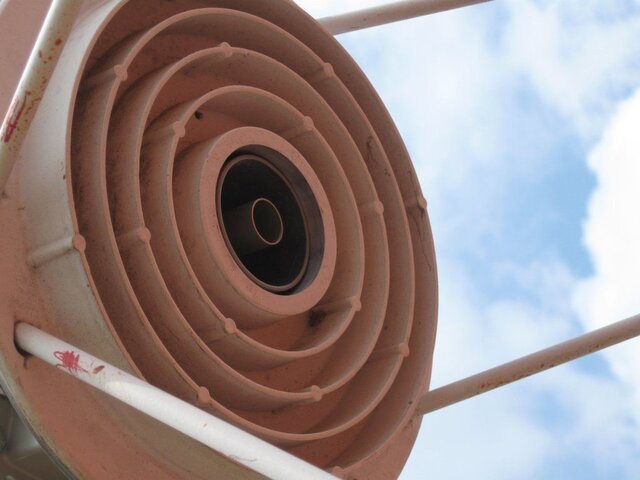I have a couple of questions for the good members of the BVOC (Birdview Owners Club).
I plan to mount a Bullseye II orthomode feedhorn on my Birdview solid. I have the scaler ring honed to accept a standard Chaparral feed. I had the 'rings' milled off of the front of a Co-rotor scaler and mounted it on the back of the BV scaler. I will use the set screw on the co-rotor scaler to secure the feedhorn. This setup works fine with a co-rotor feedhorn.
My problem is that the throat of the orthomode feedhorn is shorter than the co-rotor. When I insert the feedhorn as far as it will go, the mouth of the feedhorn doesn't project past the front of the scaler. See the attachments for more detail. Would one of you fellow Birdview w/orthomode owners take a few minutes to measure how far the mouth of your feedhorn projects from the scaler. If I only need a little more length I can cut a couple of notches into the co-rotor mounting ring. If I need more I may need to remove the co-rotor scaler and tap the Birdview scaler to accept a set screw.
My Birdview had the factory(?) sensor mod. When I got the dish the magnet wheel only had 4 magnets installed!!! I replaced them with 8 new ones. I just received my new GBox 3000 and I haven't had time to test the setup to see if 8 magnets will yield enough pulses to work accurately on ku. I have modded a couple of multiswitches to output 18v on all ports (Thanks for the instructions, pendragon) and have a Pansat 9000 on the way. Once I get the feedhorn installed I'll post an update. A new coat of paint won't hurt anything either... The other two dishes in the pictures are Unimesh 10's. I planted them in a straight line with enough distance between them so they will 'see' over the dish in front of them. That way every dish has an unobstructed view H to H.
I plan to mount a Bullseye II orthomode feedhorn on my Birdview solid. I have the scaler ring honed to accept a standard Chaparral feed. I had the 'rings' milled off of the front of a Co-rotor scaler and mounted it on the back of the BV scaler. I will use the set screw on the co-rotor scaler to secure the feedhorn. This setup works fine with a co-rotor feedhorn.
My problem is that the throat of the orthomode feedhorn is shorter than the co-rotor. When I insert the feedhorn as far as it will go, the mouth of the feedhorn doesn't project past the front of the scaler. See the attachments for more detail. Would one of you fellow Birdview w/orthomode owners take a few minutes to measure how far the mouth of your feedhorn projects from the scaler. If I only need a little more length I can cut a couple of notches into the co-rotor mounting ring. If I need more I may need to remove the co-rotor scaler and tap the Birdview scaler to accept a set screw.
My Birdview had the factory(?) sensor mod. When I got the dish the magnet wheel only had 4 magnets installed!!! I replaced them with 8 new ones. I just received my new GBox 3000 and I haven't had time to test the setup to see if 8 magnets will yield enough pulses to work accurately on ku. I have modded a couple of multiswitches to output 18v on all ports (Thanks for the instructions, pendragon) and have a Pansat 9000 on the way. Once I get the feedhorn installed I'll post an update. A new coat of paint won't hurt anything either... The other two dishes in the pictures are Unimesh 10's. I planted them in a straight line with enough distance between them so they will 'see' over the dish in front of them. That way every dish has an unobstructed view H to H.
Attachments
Last edited:








